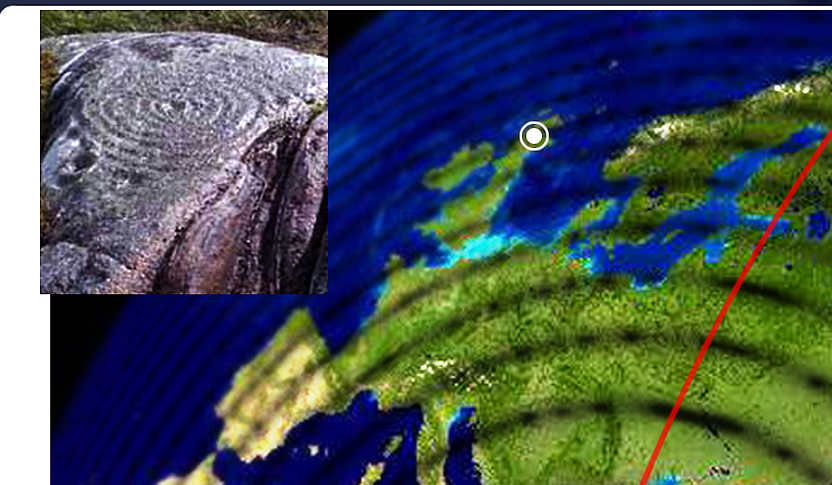Piezoelectric Rock Art in Perthshire, Scotland
Perthshire Rock Art Sheds Light on Scotland's Prehistoric Past
By Graham Spicer
August 3, 2007
Archaeologists have discovered a large group of ancient rock art in Perthshire, which they hope will shed more light on the area’s prehistoric inhabitants.
A team working on National Trust for Scotland (NTS) land as part of the Ben Lawers Historic Landscape Project found the previously undiscovered ‘cup-and-ring’ style markings on a hillside overlooking Loch Tay and Kenmore. The carvings could date back to Neolithic times and be up to 5,000 years old.
Cup-and-ring rock art features abstract symbols of circles and cups, chipped out of the stone some time between 3,000-1,500 BC, from the late Neolithic period to the early Bronze Age. Other examples have been found at locations in upland Britain and across Atlantic Europe, from Portugal to Orkney.
"It is likely that these specialised symbols had different meanings depending on their context of use, much like the Christian cross," explained Derek Alexander, NTS West Region Archaeologist.
"Some are used in ceremonial monuments, others are on public display in open landscapes like Ben Lawers, while some are included in individual burial cists [stone caskets]."
The archaeological team, led by Professor Richard Bradley from Reading University and Aaron Watson, decided to excavate one of the terraces along the hillside where the carvings were found.
"The team have been excavating small trenches around the bedrock outcrops to try and find any artefactual evidence that might be contemporary with the carving and use of the rock art sites," said Derek.
Similar cup-and-ring carvings have been found at this site in Northumberland [above, right].
"Already quantities of flaked and worked quartz have been recovered," he added. "More surprising, however, was the discovery of two flakes of Arran pitchstone. This is a volcanic glass that is only found on the Isle of Arran in the Firth of Clyde and must have been brought to the site at Ben Lawers."
It is hoped that these discoveries will lead to a much better understanding of Scotland’s prehistoric past, said archaeologist Aaron Watson, who has investigated several cup-and-ring sites, including one at Kilmartin Glen in Argyll.
"What is important about our current work is trying to move beyond simply studying the individual motifs to finding evidence for the people who made, used and understood these sites."
Analysis
These beautiful rock carvings near Loch Tay are exactly replicating the concentric mandala formations known from southern England and various other locations including Germany. The stone itself offers clues to the nature of the acoustic energy that forms these concentric circles of standing waves. The carved stones, like the megaliths of Stonehenge, are comprised primarily of quartz, well-known for its piezoelectric properties by which it transduces acoustic energy into an electric charge within the matrix of the stone.
This Perthshire rock art site near Kenmore (56.54N 4.22W) is 2,507 miles from the Orion pyramids of Giza, Egypt, a distance that is 10.0% of the Earth's mean circumference of 24,892 miles. This geoposition is precisely one tenth of the Earth's circumference, confirming the resonant location of the rock art site that presents the form of the standing wave structure within which it finds its resonant effects. This exact distance is shared by the megalithic sites of Newgrange, Knowth and Dowth in Ireland, to the west (these temple alignments are listed at the bottom of the Phi page).





